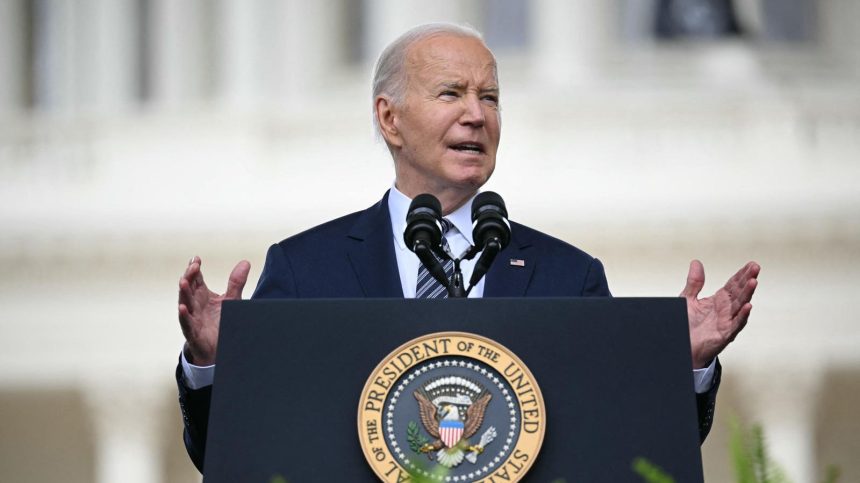The Biden administration on Wednesday announced that it is extending a critical deadline for borrowers who are pursuing student loan forgiveness under a one-time adjustment initiative. Borrowers who needed to consolidate their loans to qualify for relief would have had to apply by April 30. But the administration has now extended that consolidation deadline to June 30.
“The Department is working swiftly to ensure borrowers get credit for every month they’ve rightfully earned toward forgiveness,” said U.S. Under Secretary of Education James Kvaal in a statement. “FFEL borrowers should consolidate as soon as possible in order to receive this benefit that has already provided forgiveness to nearly 1 million borrowers.”
Here’s what borrowers should know about this major announcement.
Student Loan Forgiveness Eligibility Under IDR And PSLF May Depend On Consolidation For Some
The IDR Account Adjustment — sometimes referred to as the “one-time adjustment” initiative — is intended to fix historic issues with income-driven repayment plans and the Public Service Loan Forgiveness program.
Both IDR and PSLF can result in student loan forgiveness, typically after 10, 20, or 25 years in repayment, depending on a borrower’s specific circumstances and eligibility. But both programs have been riddled with administrative and oversight problems for many years. Due to a combination of confusing and poorly-communicated rules and lax oversight by the government, many borrowers lost years of progress toward loan forgiveness that they were entitled to under federal law.
The one-time account adjustment is intended to correct this by providing borrowers with retroactive credit for past loan periods that previously wouldn’t have counted toward loan forgiveness under IDR plans or PSLF. Under the program, many past periods of repayment can count (regardless of the type of loan, type of repayment plan, or specific payment history), as well as certain periods of deferment and forbearance.
The IDR Account Adjustment is not a permanent, new program, however. It is a temporary waiver, and the Education Department is planning on wrapping up relief later this year. Borrowers who already have Direct loans and other federal student loans directly administered by the department can qualify for the IDR credit automatically (although only Direct loan borrowers can ultimately get loan forgiveness through PSLF). Borrowers with other types of federal student loans, such as commercial FFEL loans, Perkins loans, and HEAL loans, would need to consolidate into the Direct loan program in order to qualify. The previous consolidation deadline was April 30.
Biden Extends Consolidation Deadline For Student Loan Forgiveness
The April 30 deadline could have been a significant problem for many borrowers. That’s because prior to the IDR Account Adjustment, consolidating student loans that already had IDR or PSLF credit would have resulted in the loss of that credit, meaning the borrower would have to start over at zero on their repayment term. The IDR Account Adjustment waived this rule, allowing periods prior to loan consolidation to count toward loan forgiveness — as long as the borrower applied to consolidate by April 30.
New PSLF regulations that went into effect last summer mitigate this for consolidations after the account adjustment period by allowing borrowers to retain the weighted average of existing PSLF credit if they consolidated after April 30. But this is not as generous as the IDR Account Adjustment, which would maximize PSLF and IDR credit for consolidated loans based on the underlying loan that had the highest qualifying payment count or longest time in repayment. A similar weighted-average treatment for IDR is set to to into effect under Biden’s new SAVE plan, but those benefits don’t kick in until July 1. As a result, borrowers who apply to consolidate between April 30 and July 1 were at risk of losing any existing IDR loan forgiveness credit, while getting the weighted-average treatment for PSLF.
With the Biden administration’s deadline consolidation extension to June 30, this risk has now been reduced.
“The Biden-Harris Administration today announced an update on the timing of the payment count adjustment,” said the Education Department in a statement. “This administrative fix ensures borrowers get proper credit for progress borrowers made toward income-driven repayment (IDR) forgiveness and Public Service Loan Forgiveness (PSLF).” Under the updated timeline, “borrowers with non-federally held FFEL loans who apply to consolidate by June 30 can still benefit from the payment count adjustment. The prior consolidation deadline was April 30.”
Student Loan Forgiveness Tops $49 Billion Under Account Adjustment
The Education Department has been implementing the IDR Account Adjustment on a rolling basis, targeting first those borrowers who receive enough credit to reach the 20 or 25-year loan forgiveness threshold. The department has already approved more than $49 billion in student loan forgiveness for 996,000 borrowers so far. Hundreds of thousands of additional borrowers have received discharges through PSLF as a result of the same initiative.
The Education Department now expects to complete implementation of the account adjustment in September, according to Wednesday’s announcement. This represents a postponement of the anticipated completion date, which the department had previously indicated would be in July.
“At that time, borrowers with Direct Loans or Federal Family Education Loan (FFEL) Program loans held by the U.S. Department of Education (Department) will see a full and accurate count of their progress toward loan forgiveness,” says the department. Borrowers should be able to see their IDR payment counts displayed in their StudentAid.gov account at that time. Those who aren’t already enrolled in an IDR plan would need to switch to a plan like SAVE in order to continue making progress toward eventual student loan forgiveness if they are short of the threshold for an immediate discharge.
Read the full article here
















